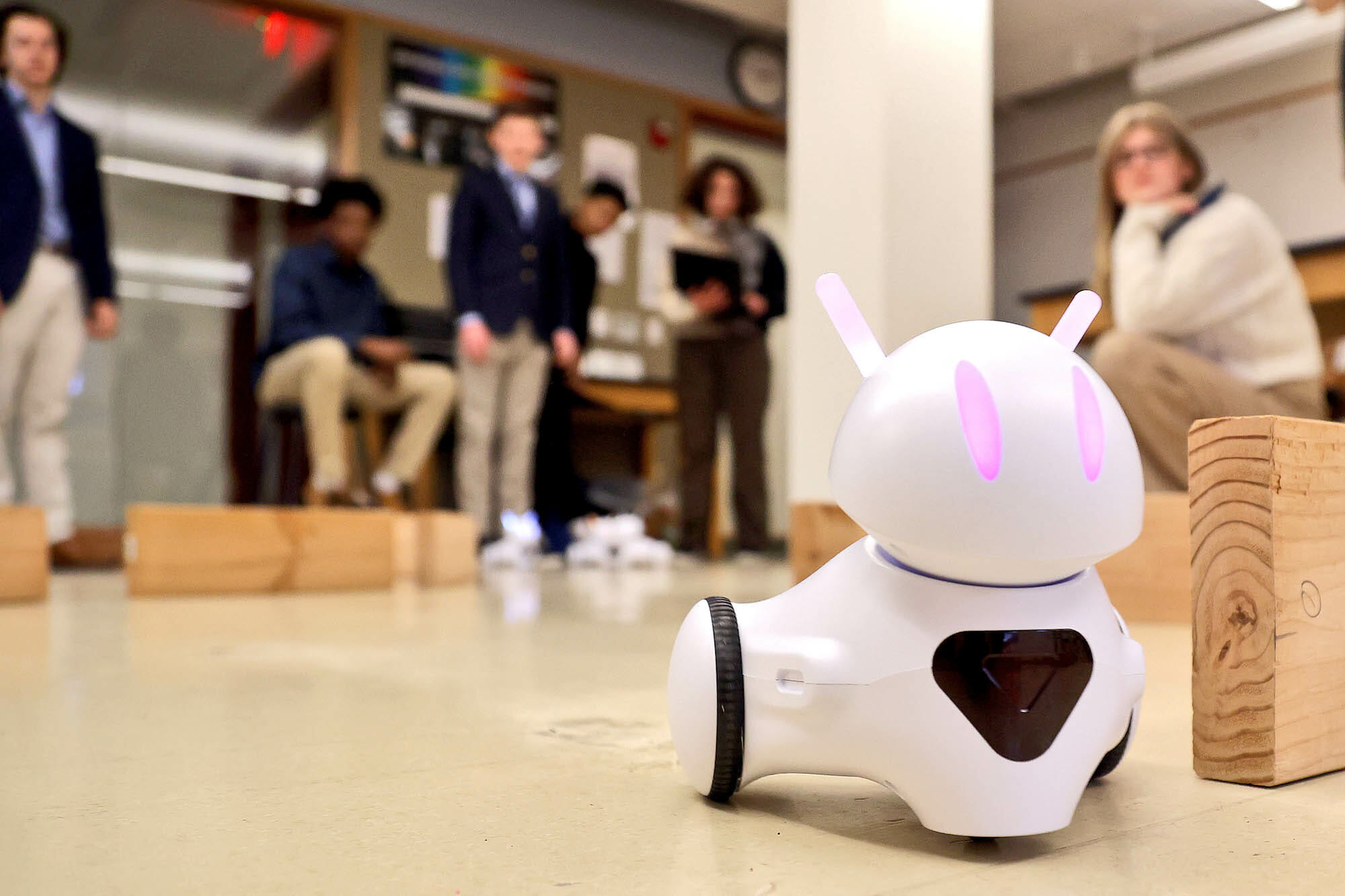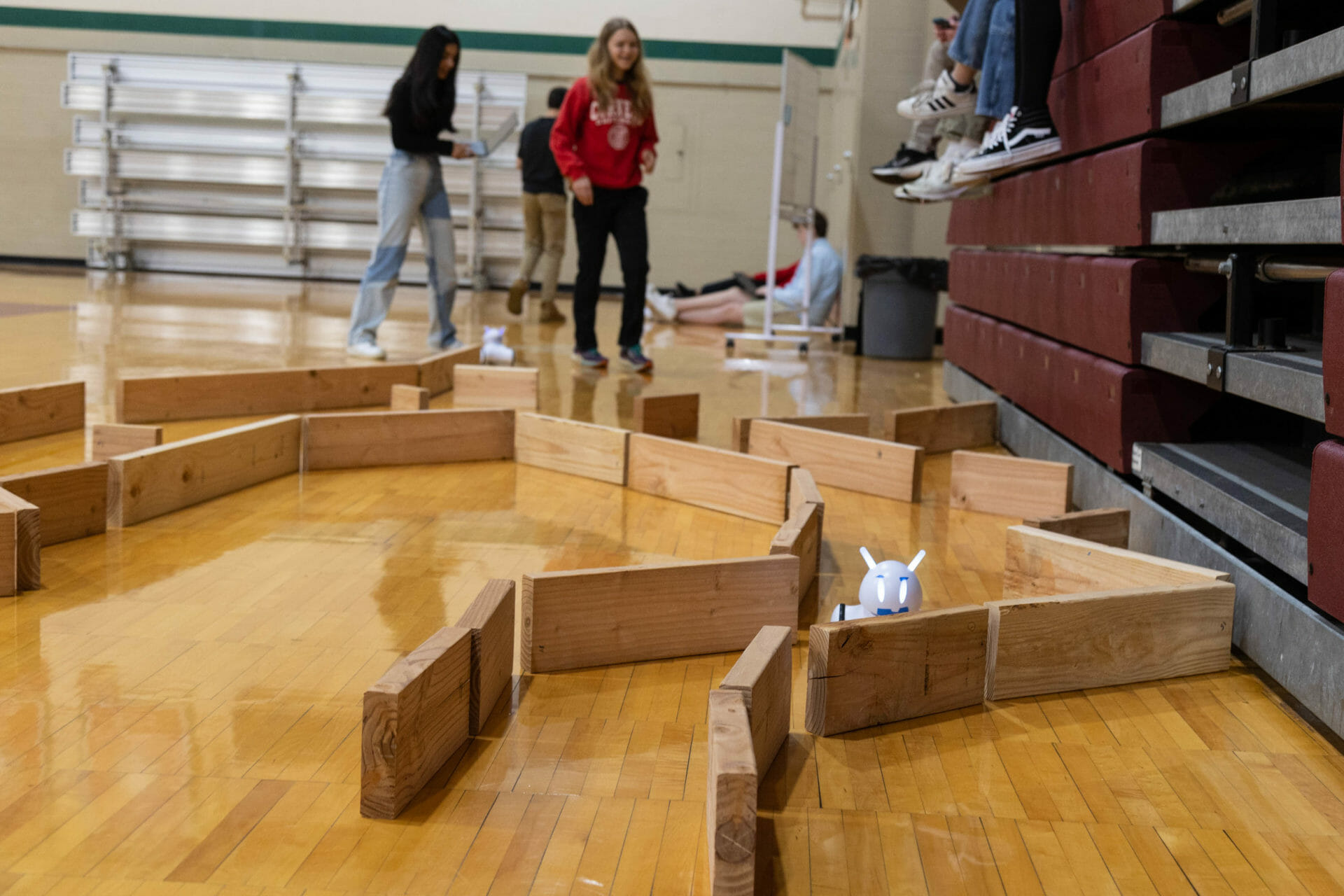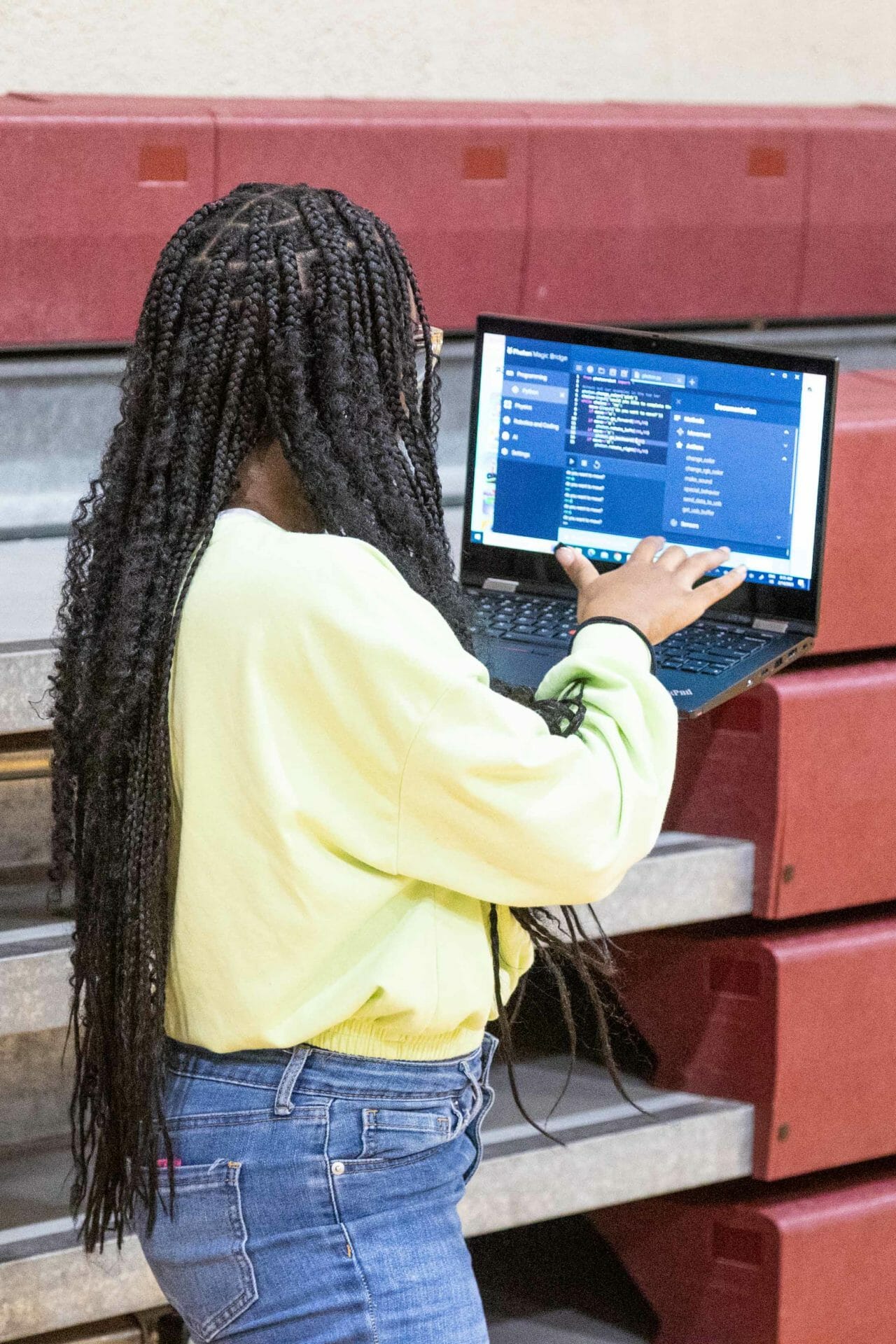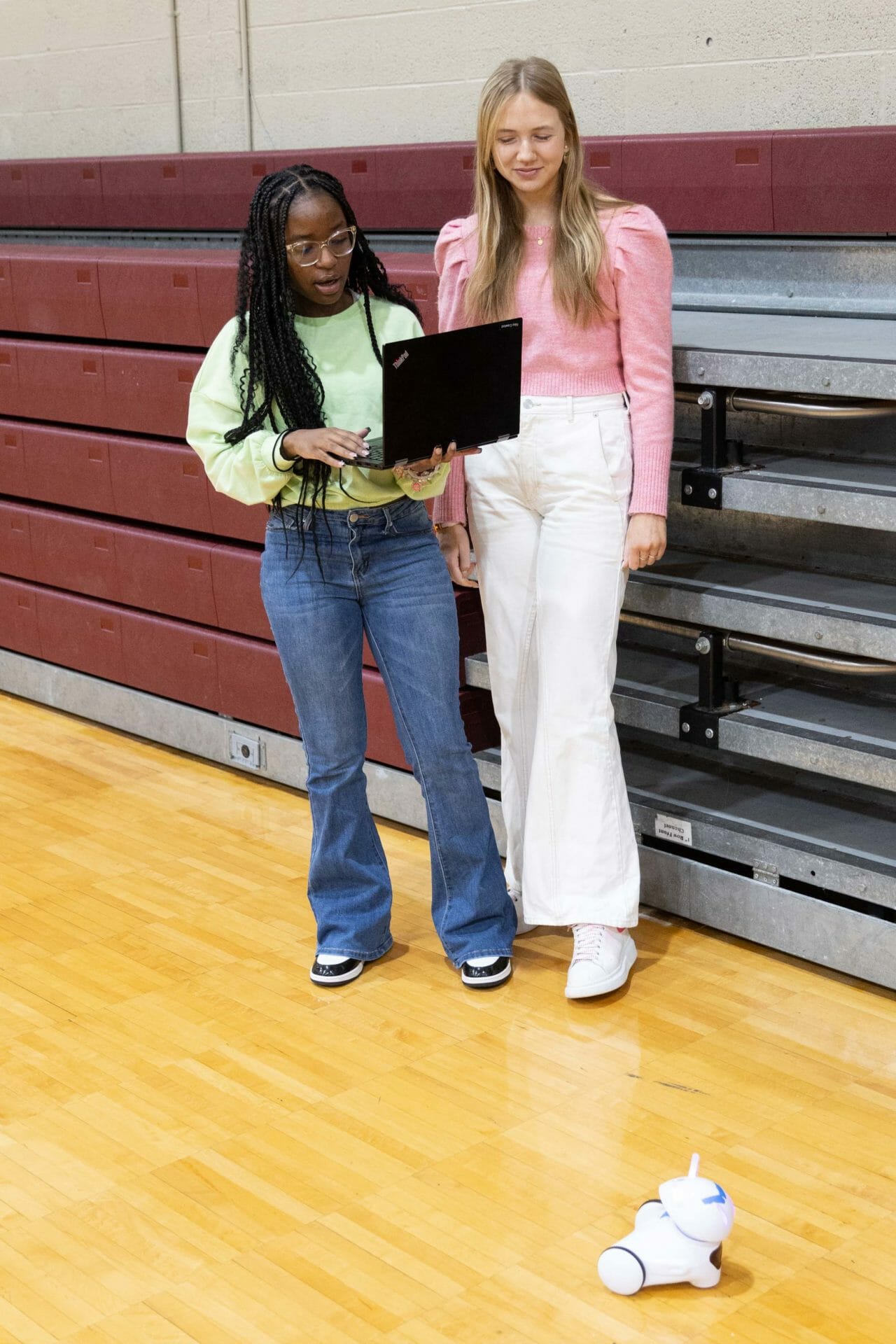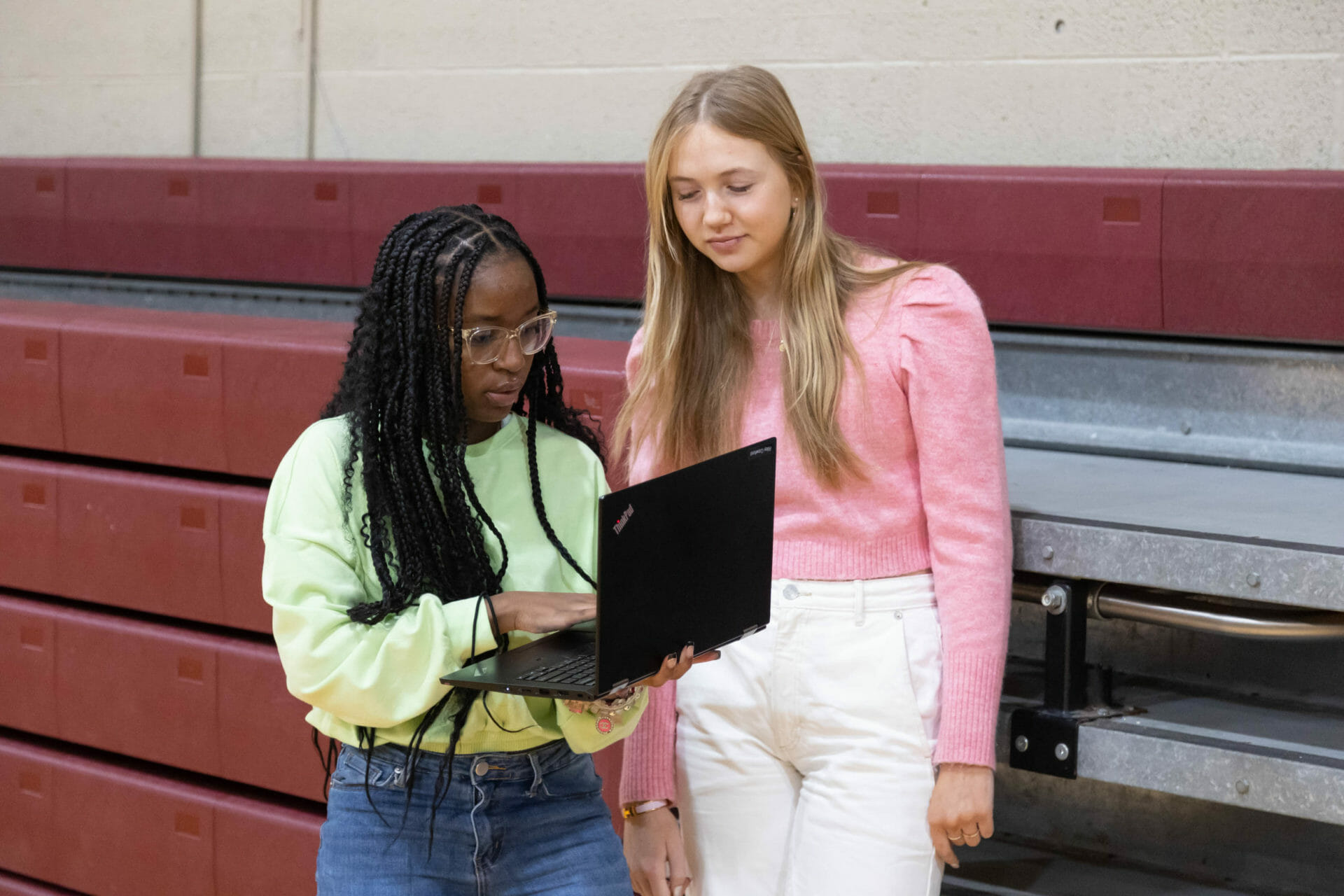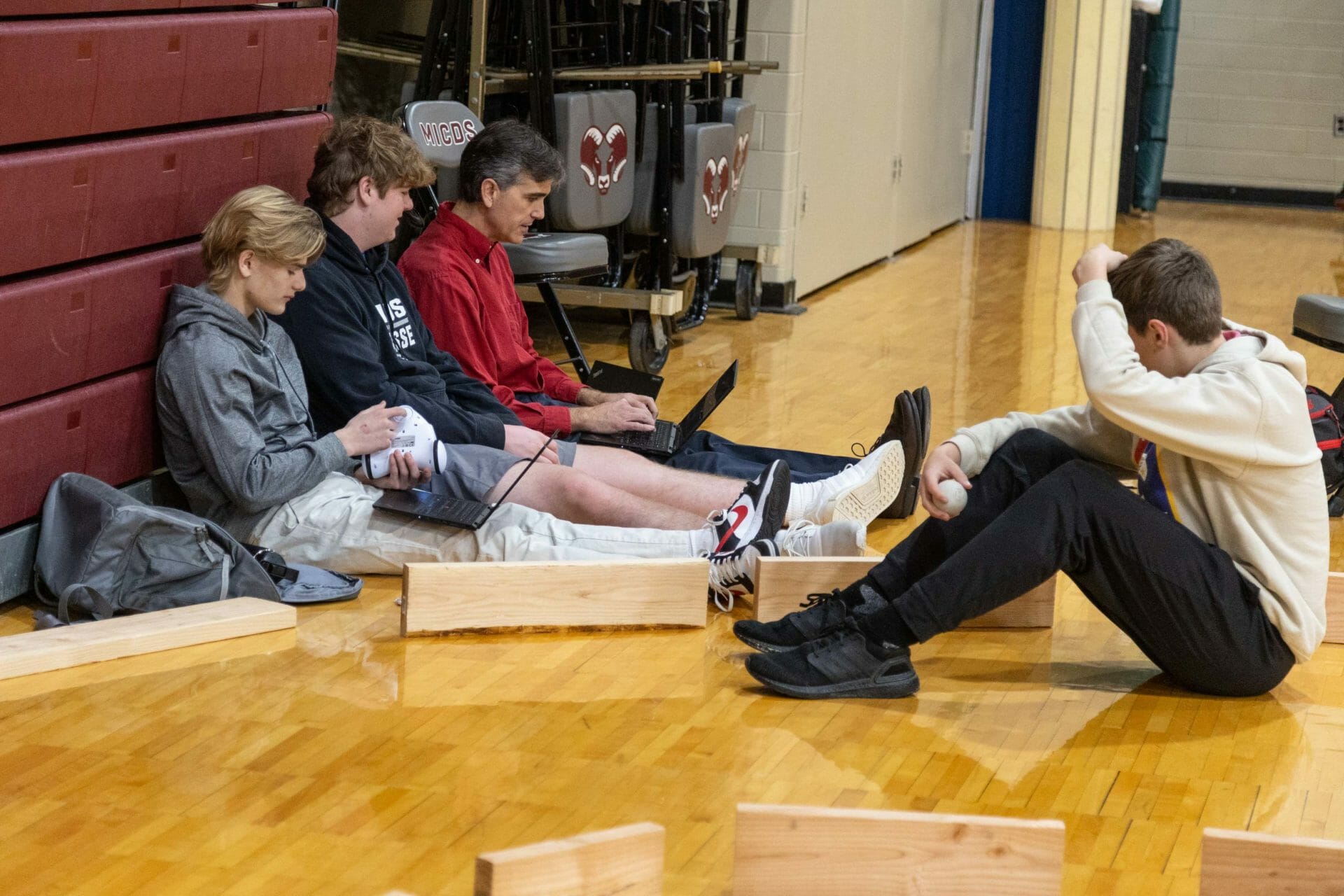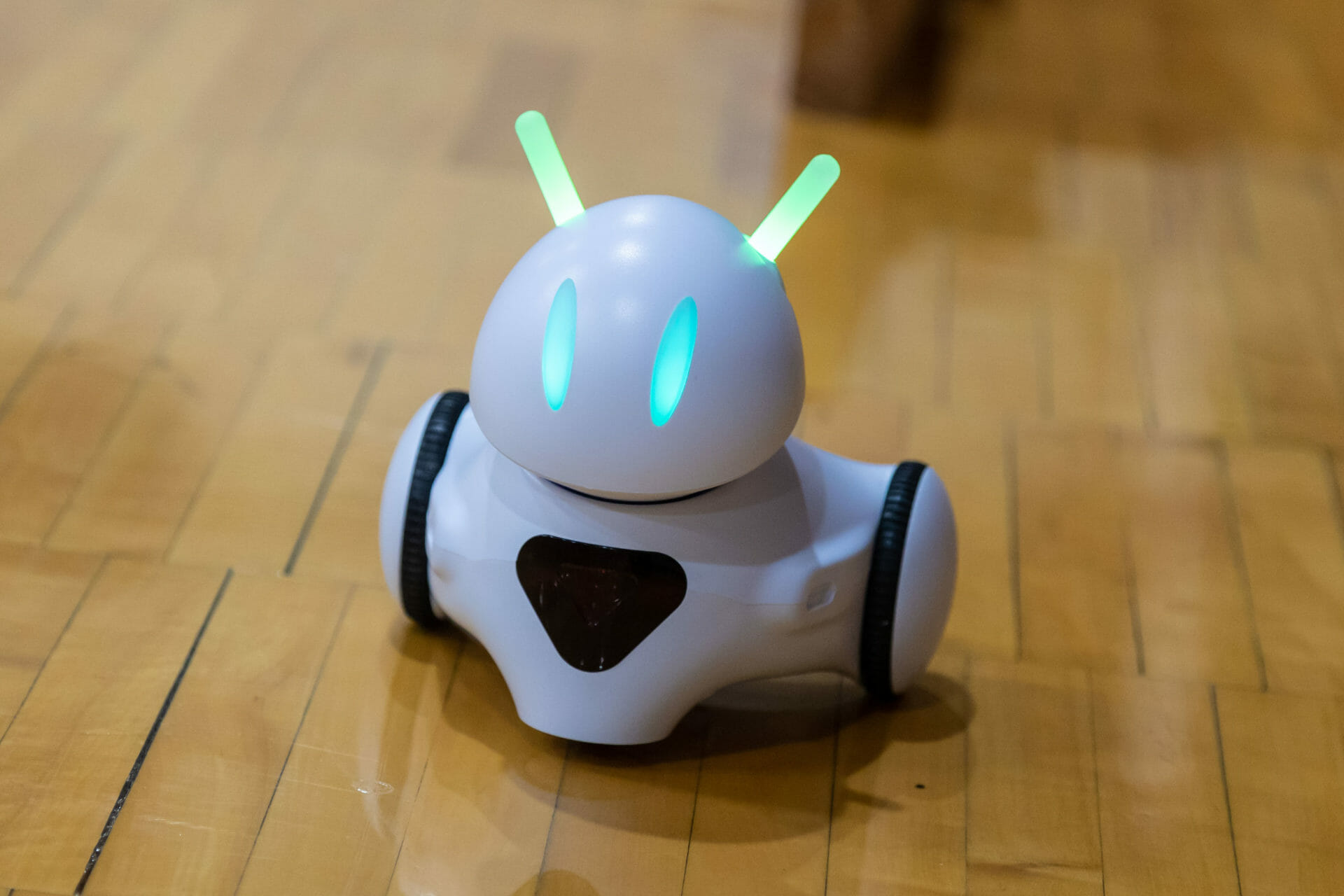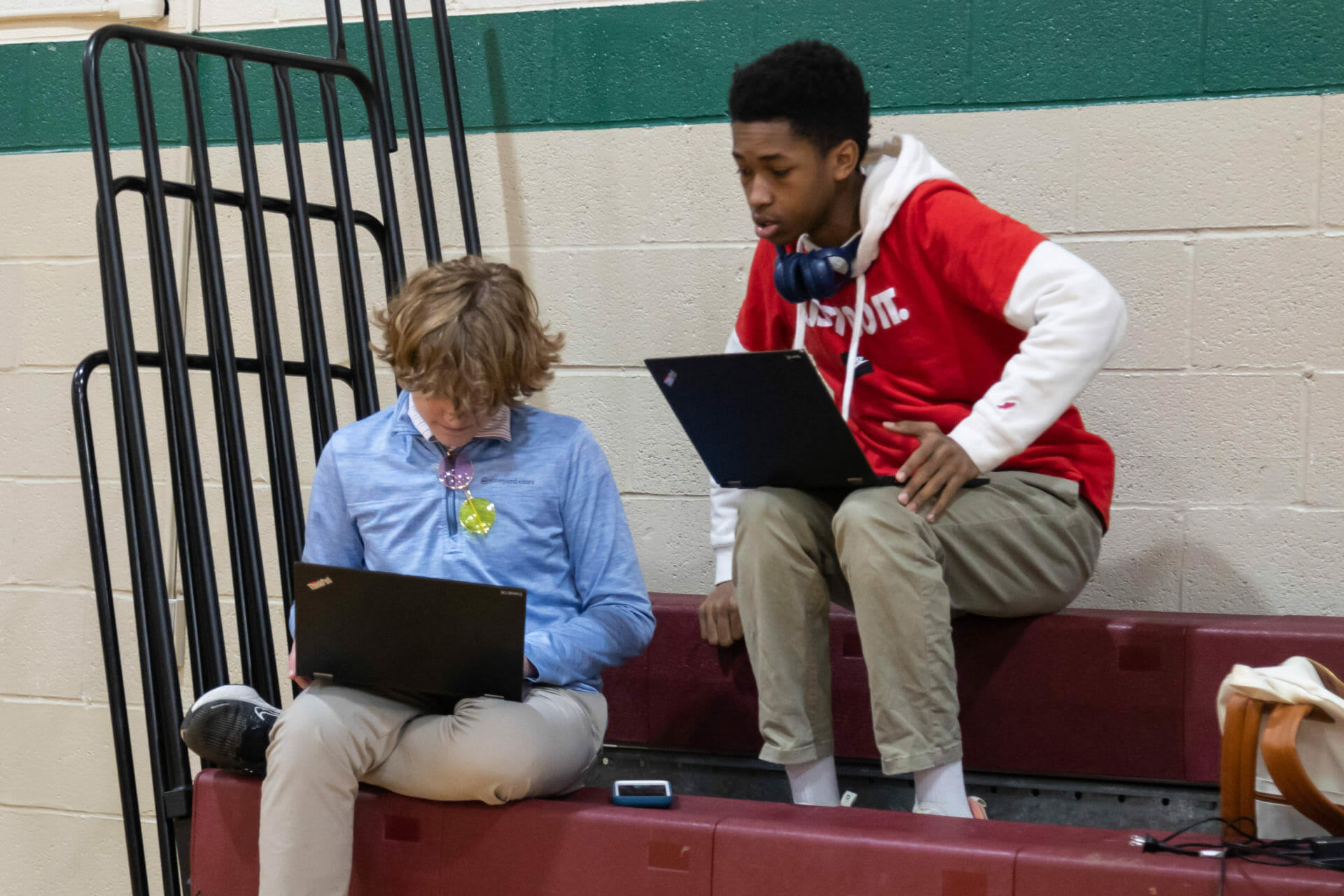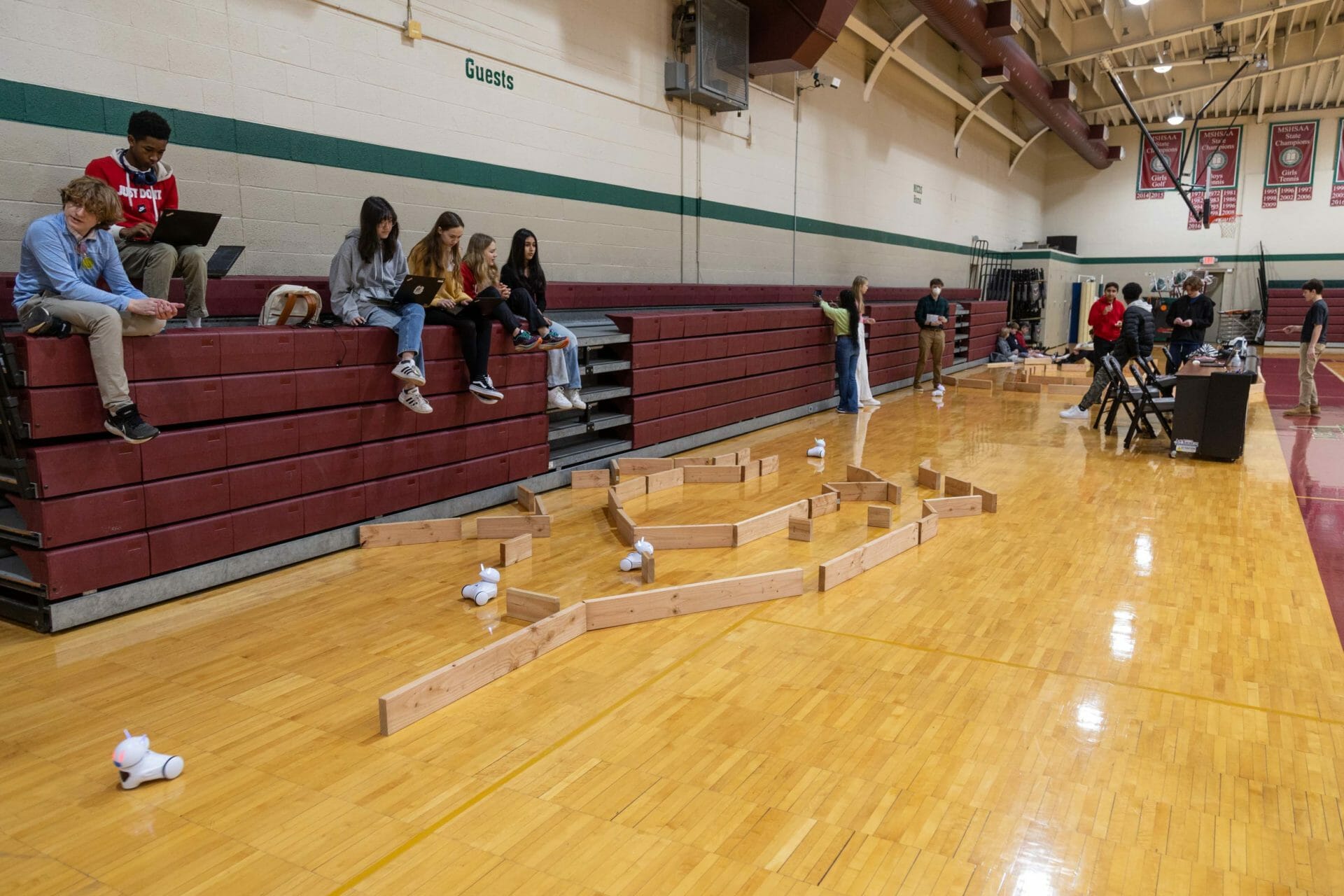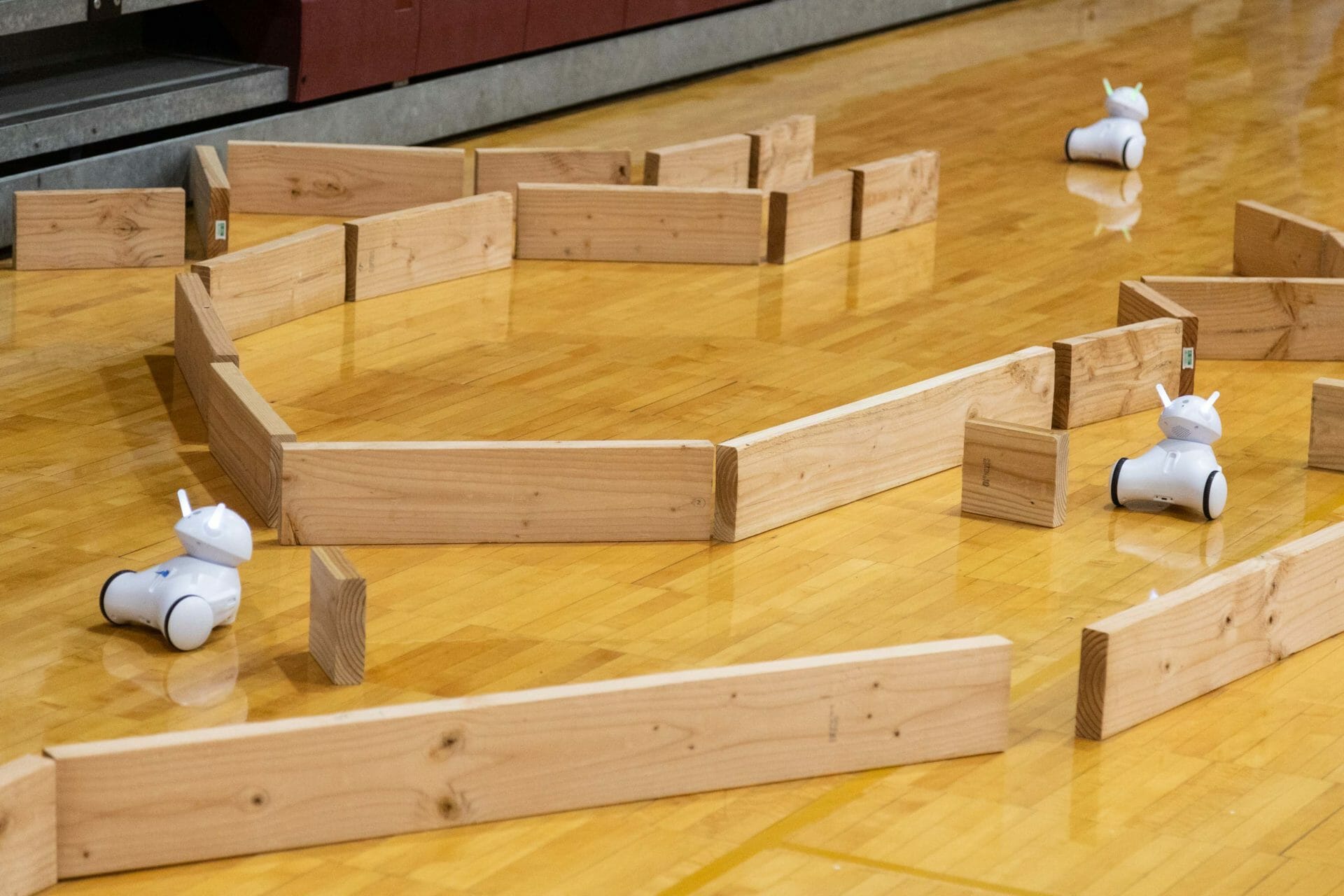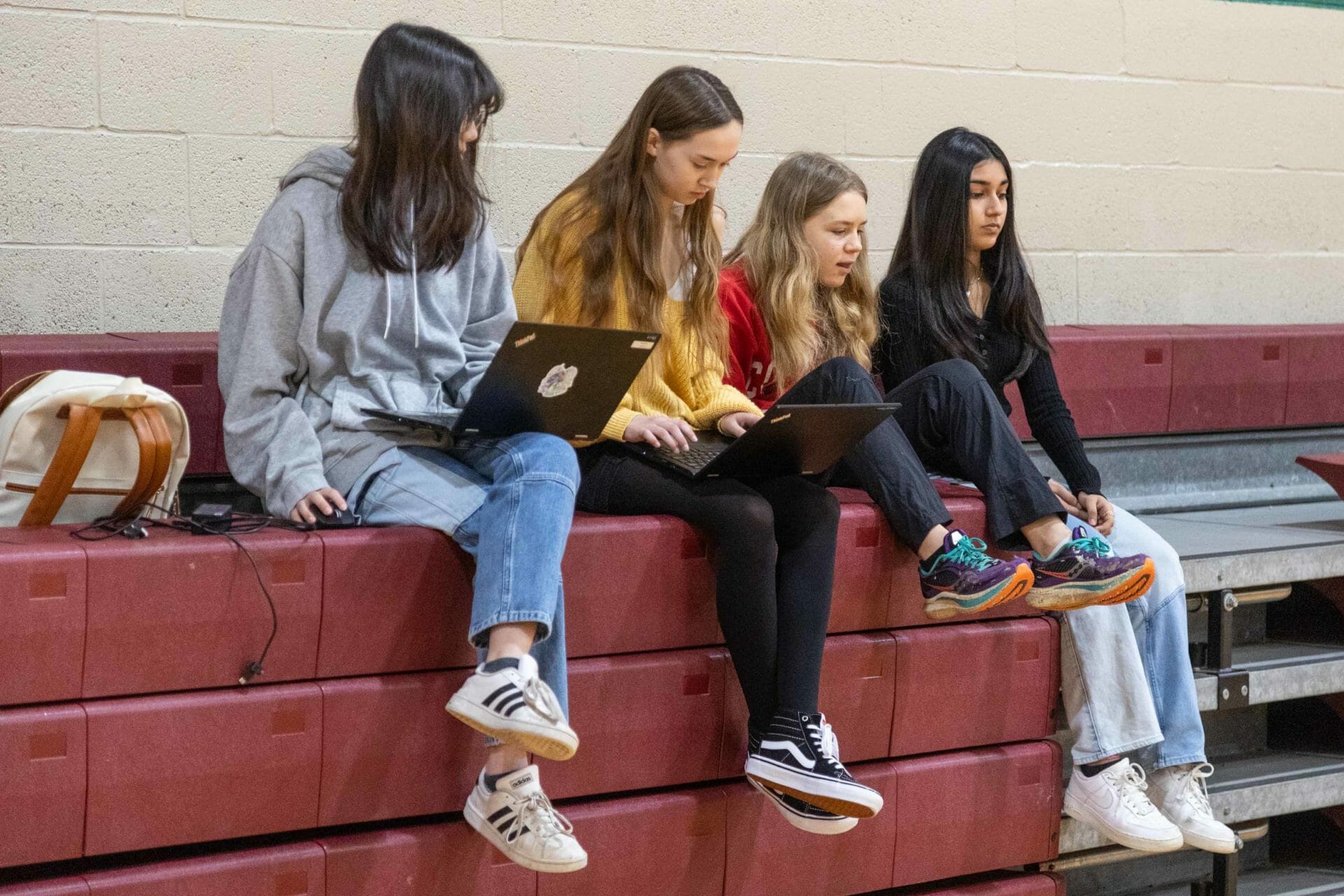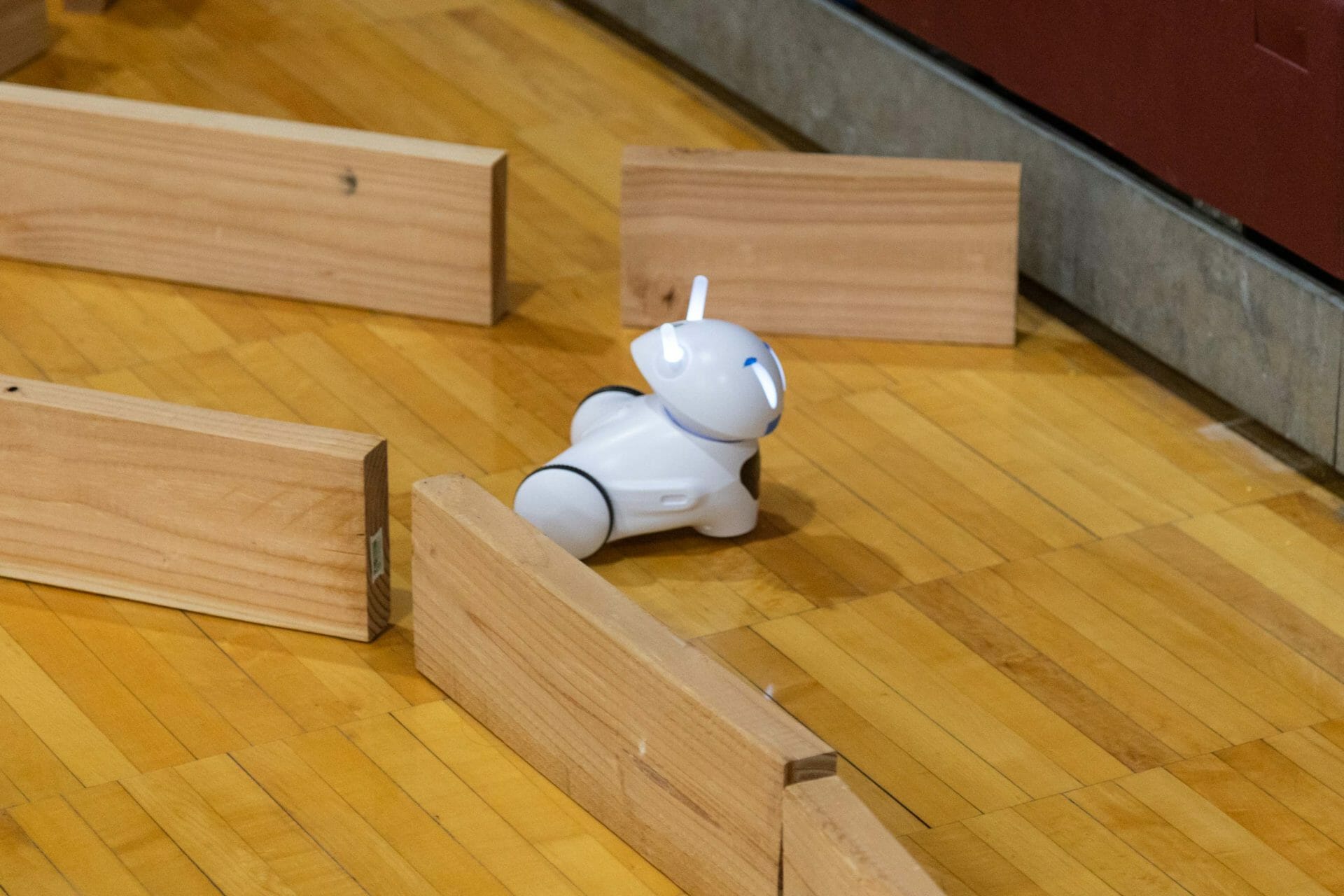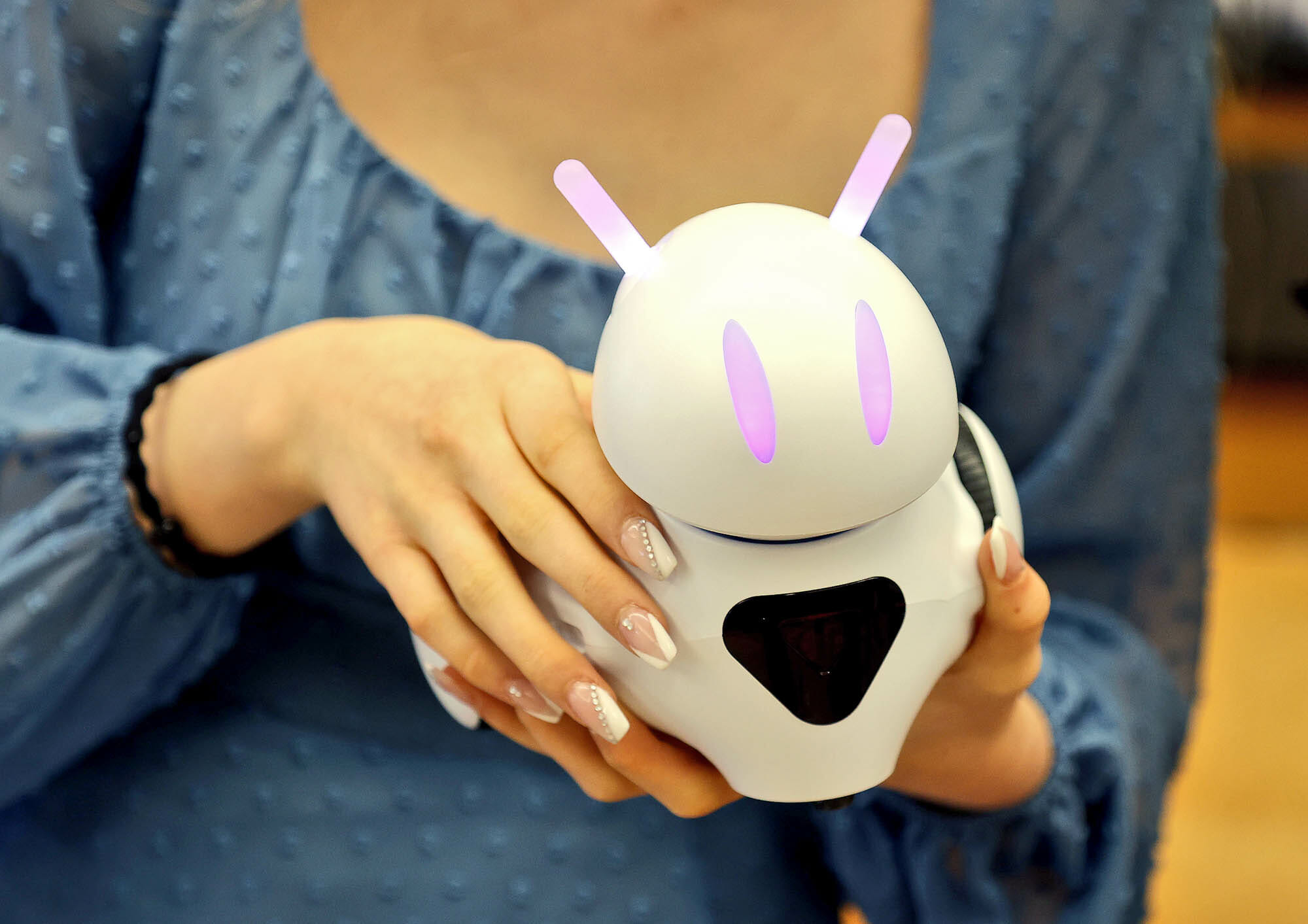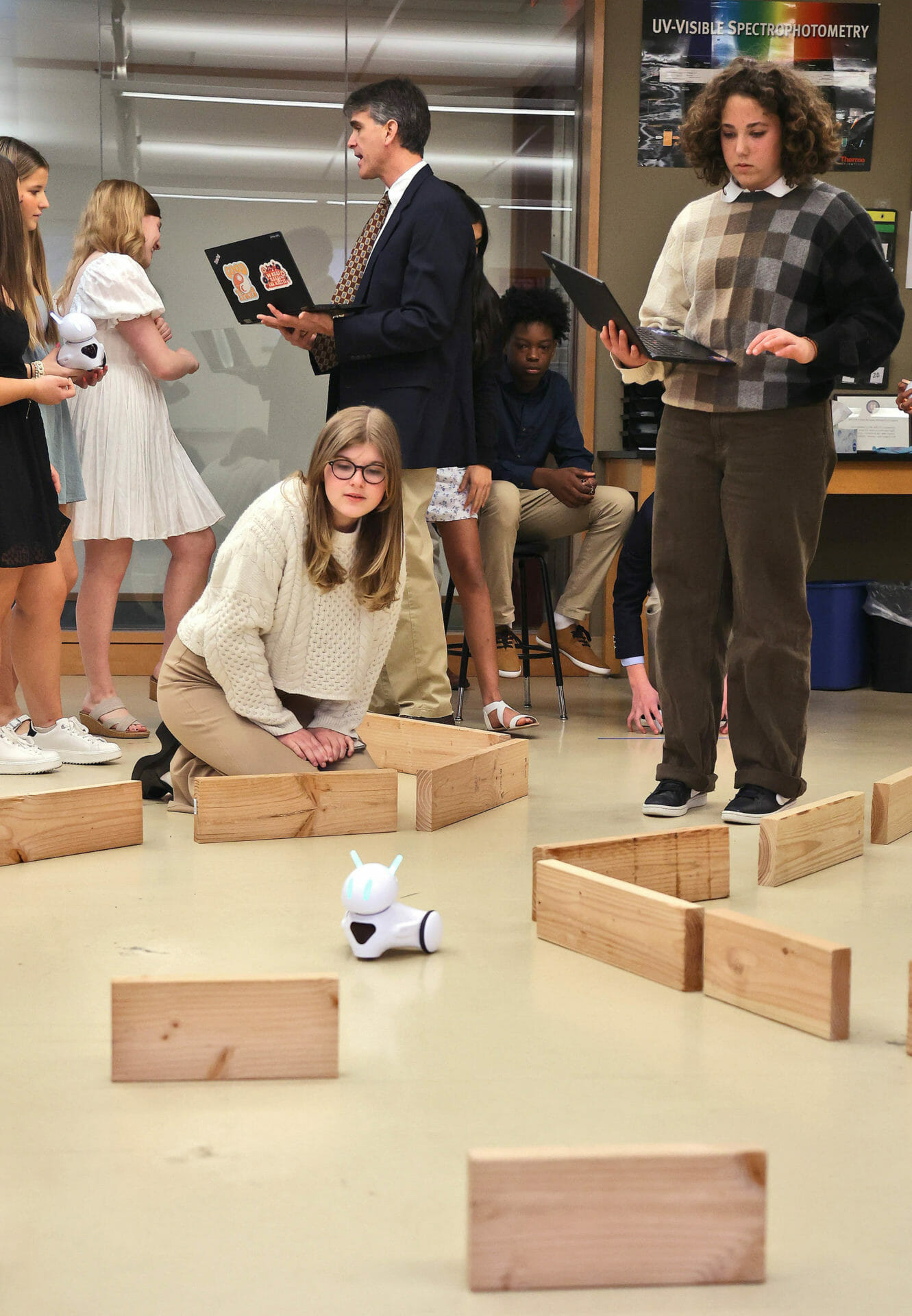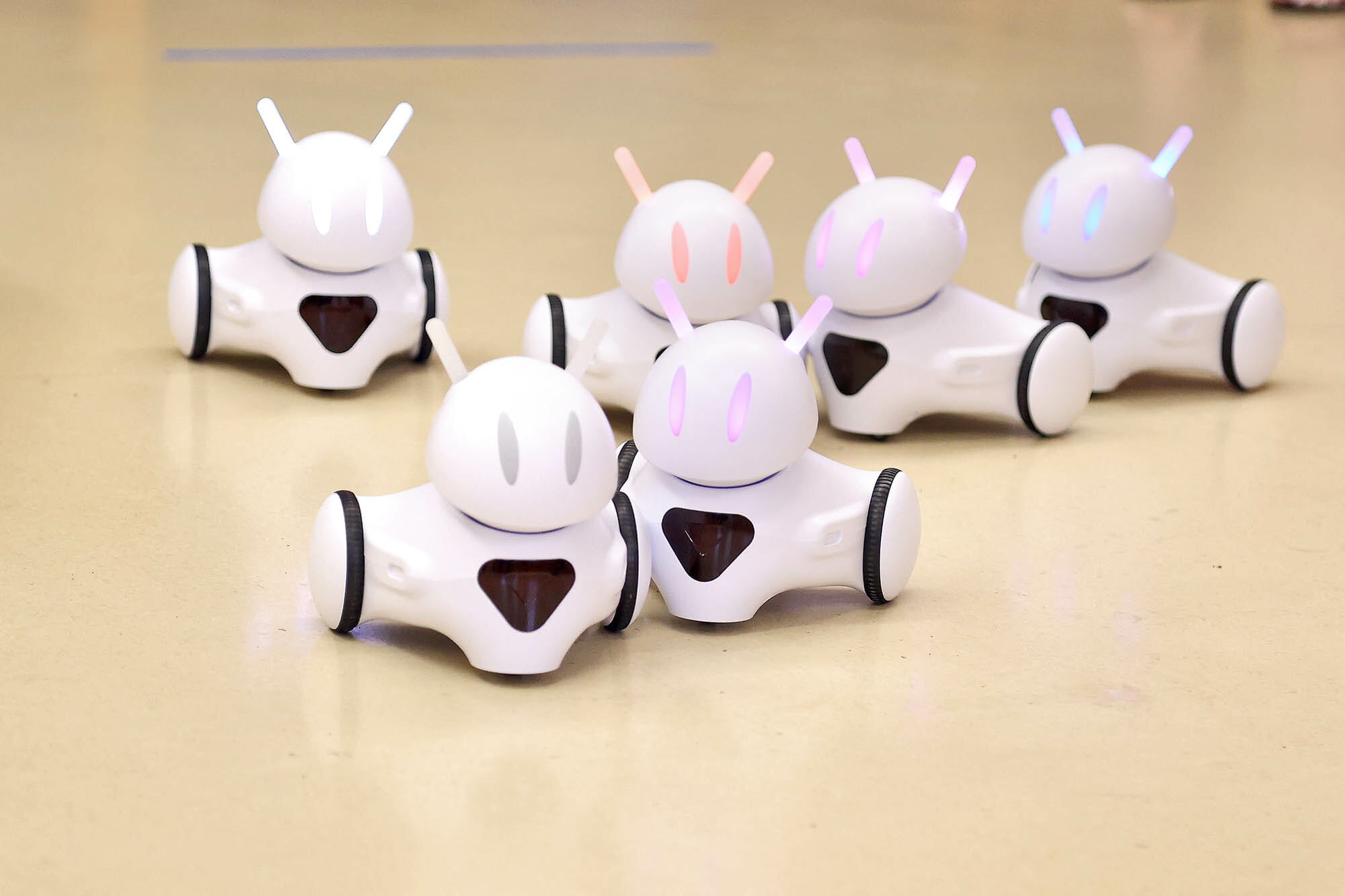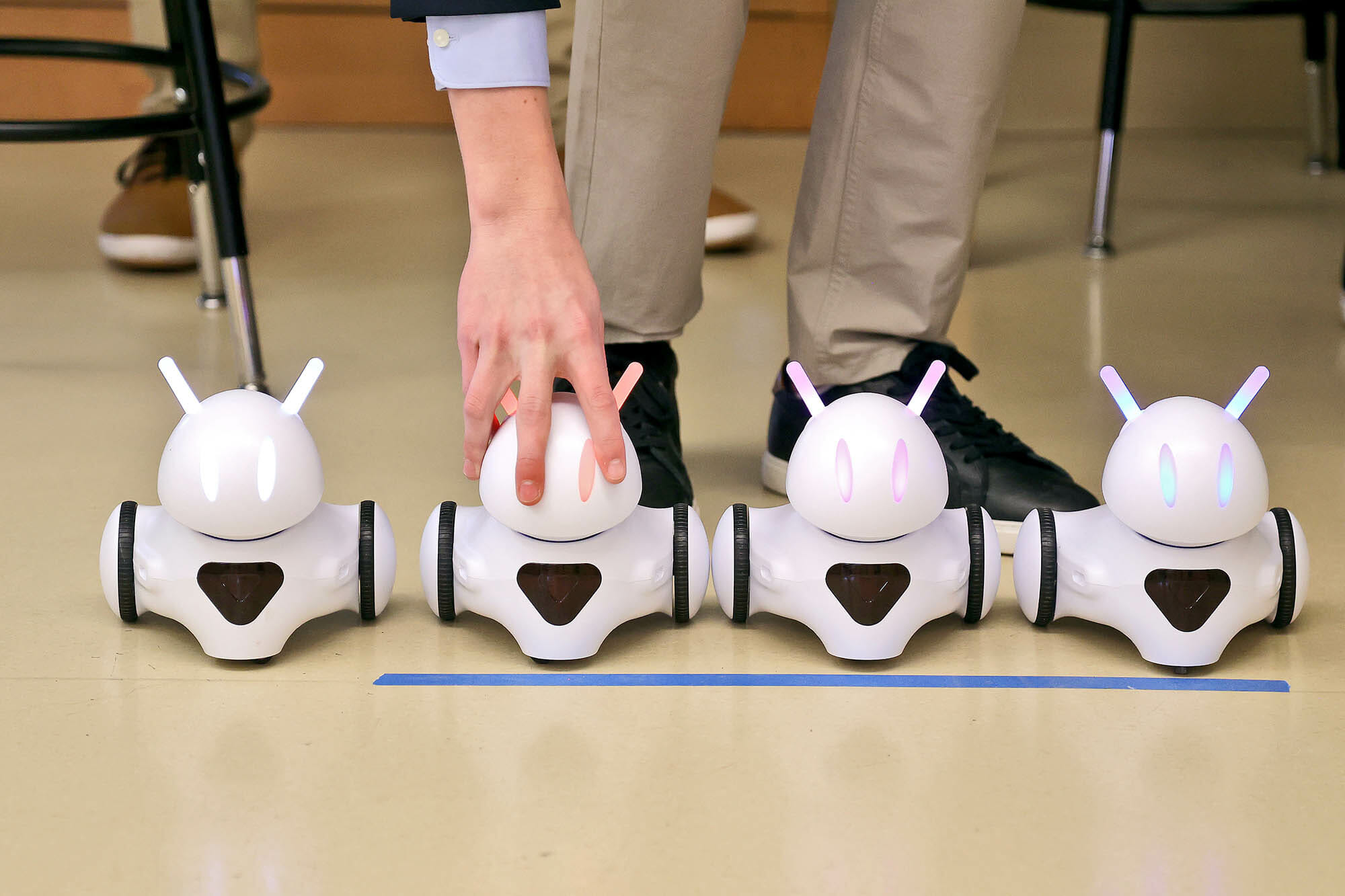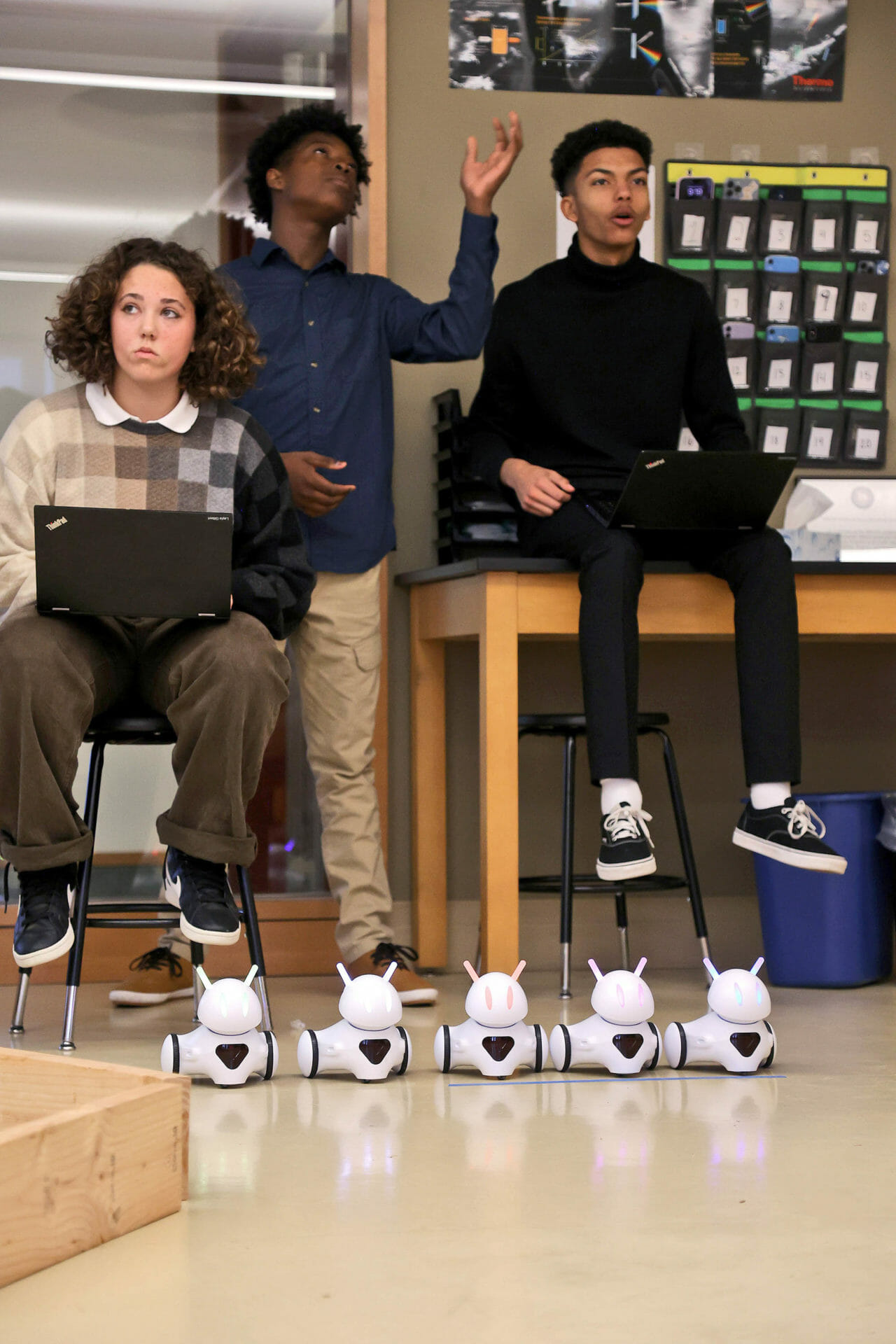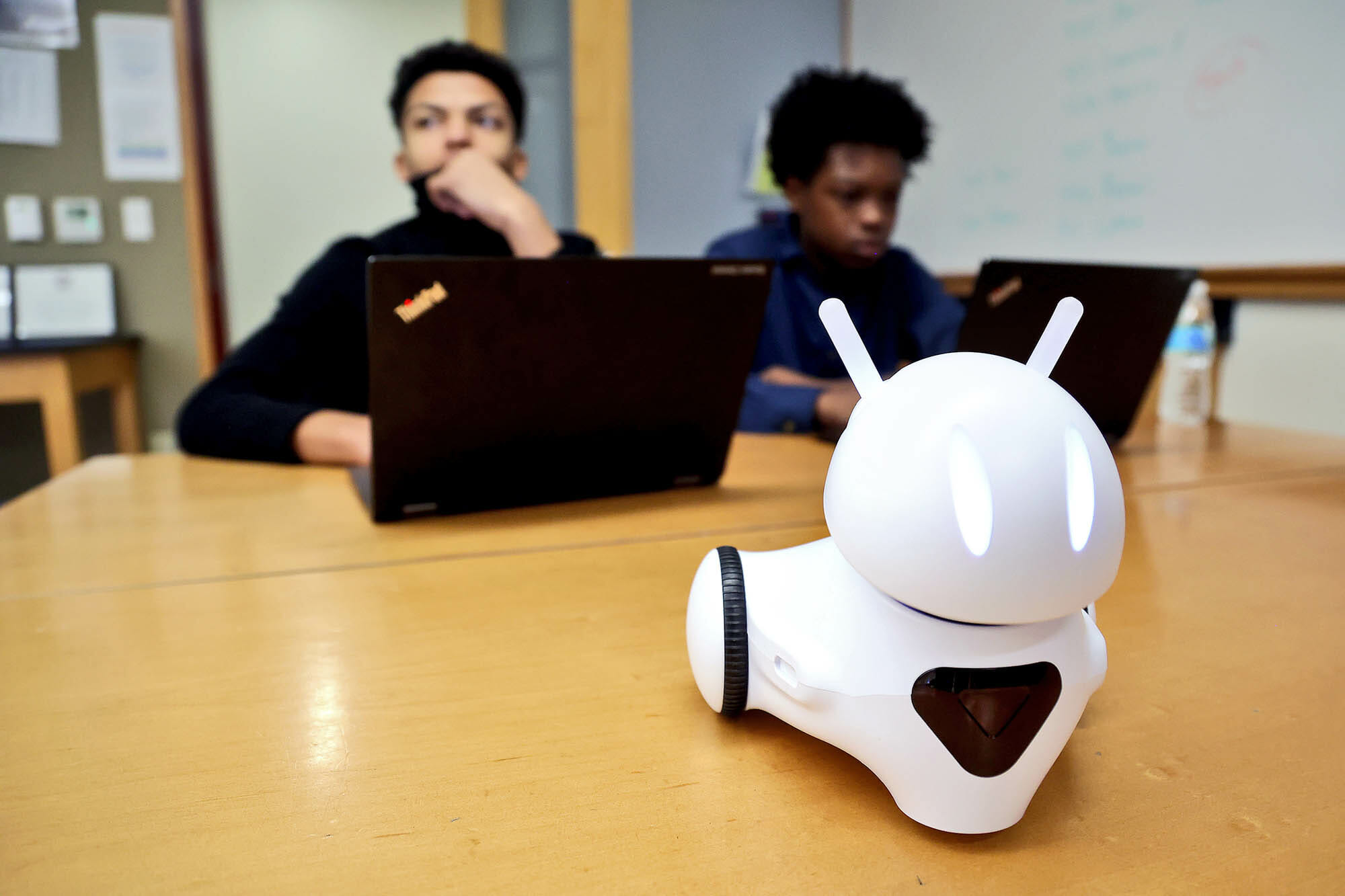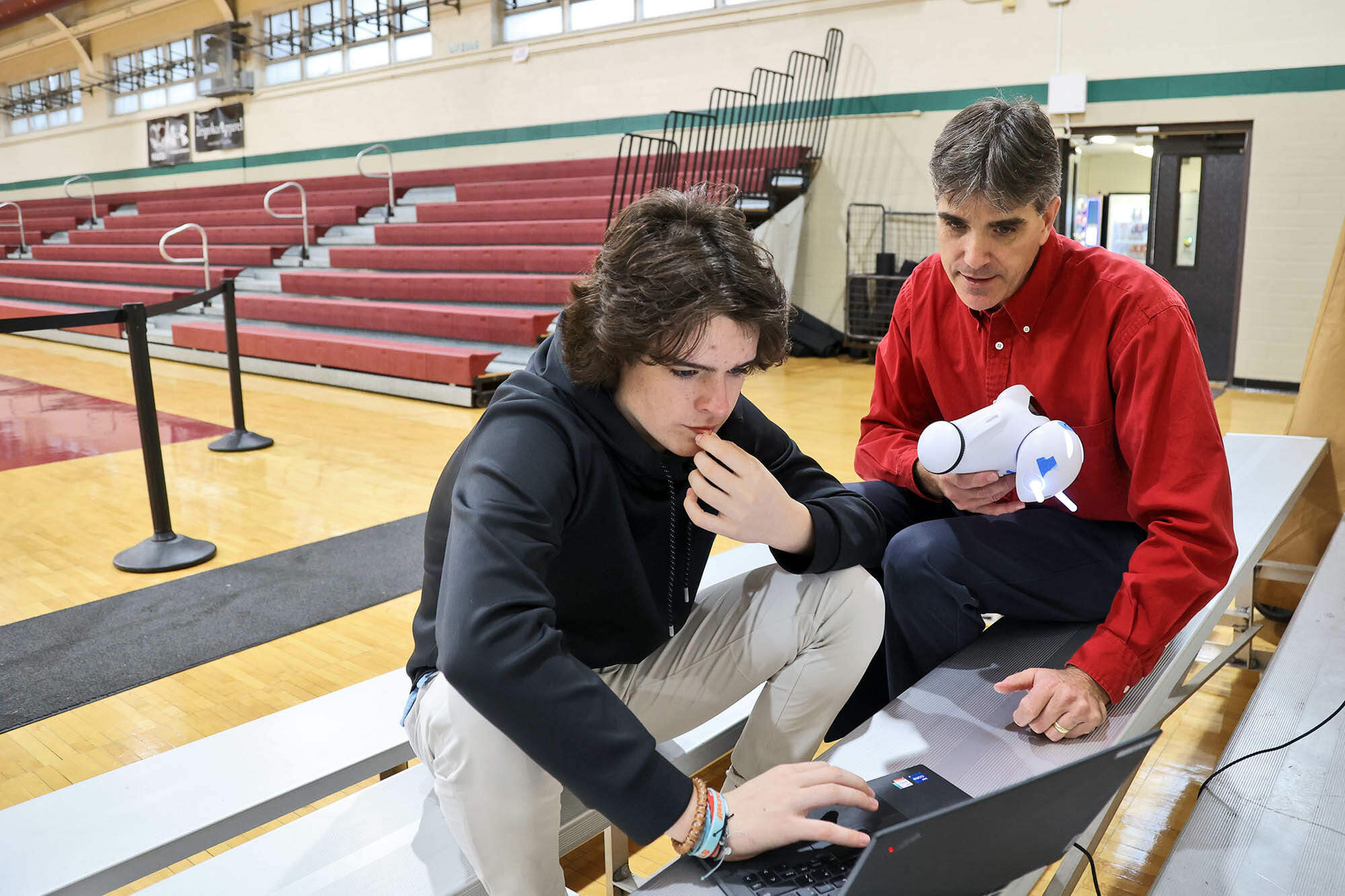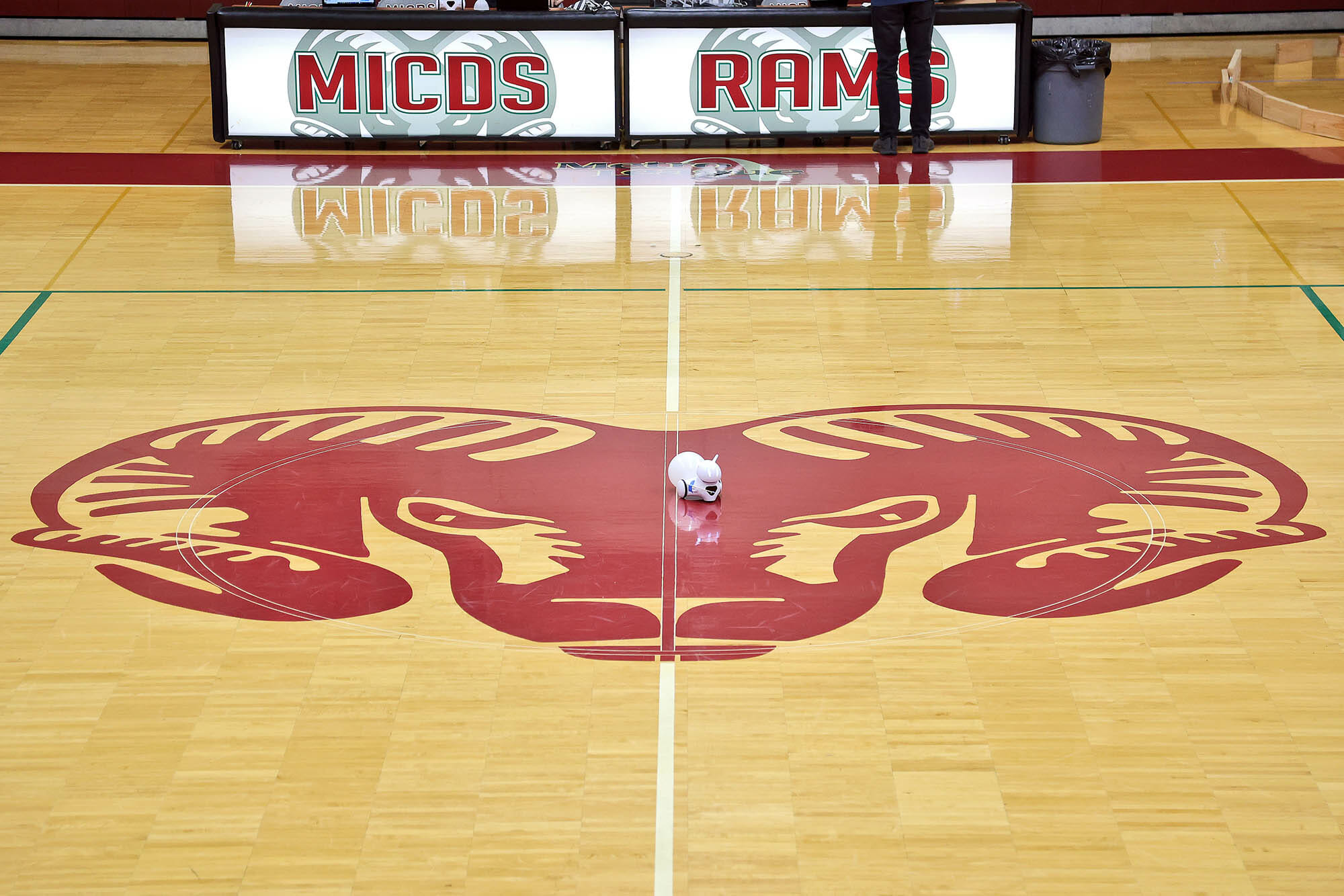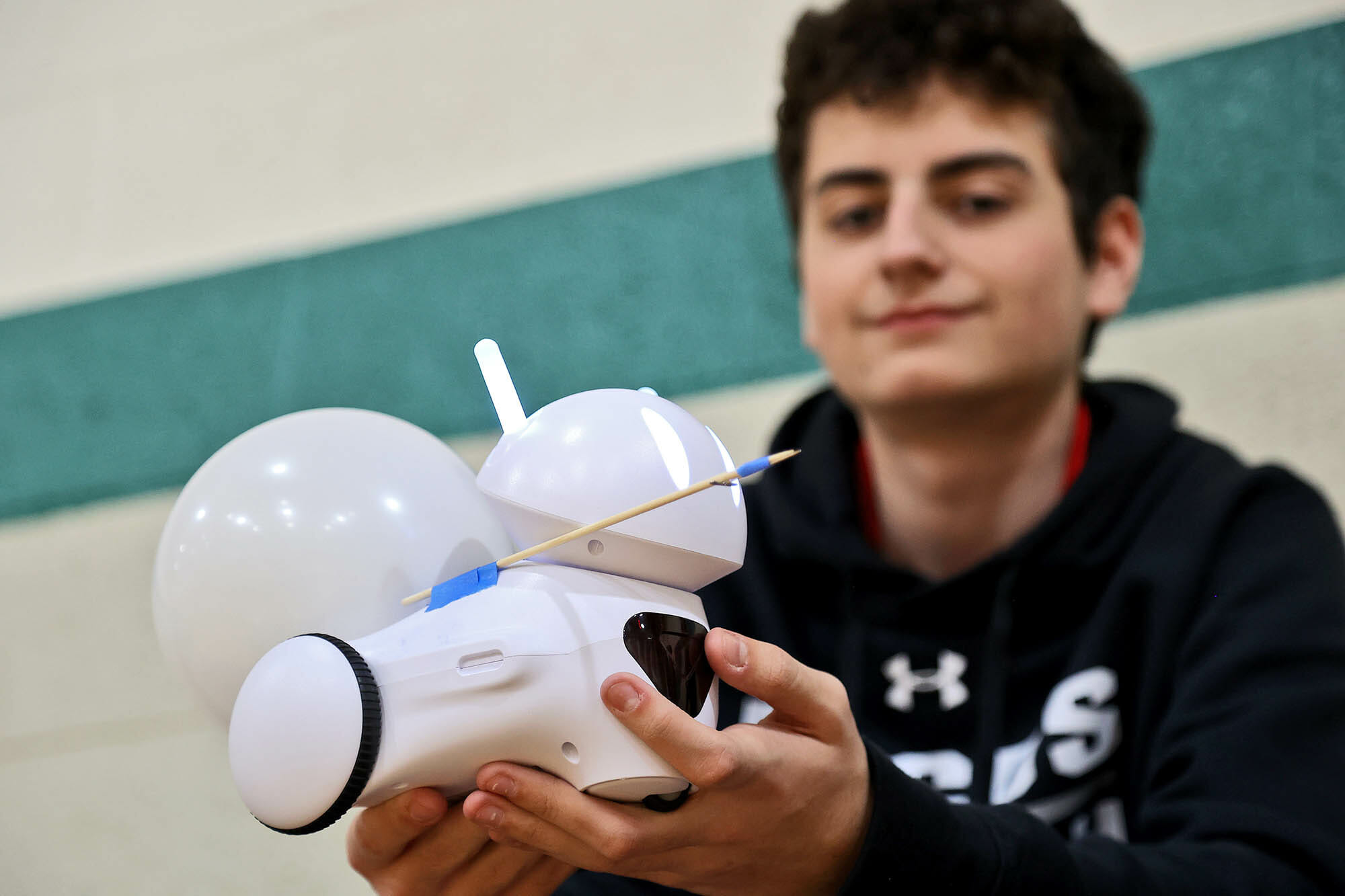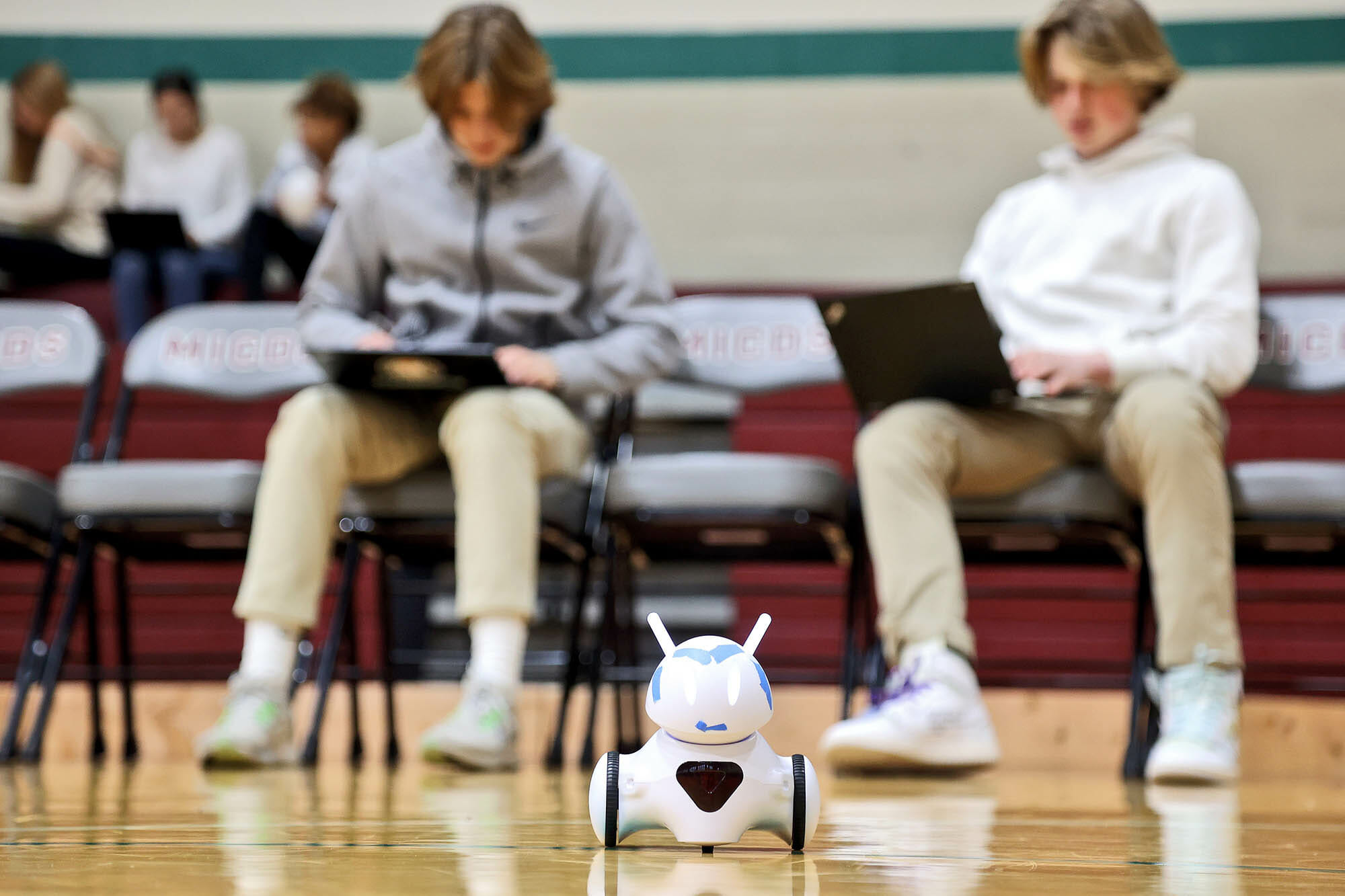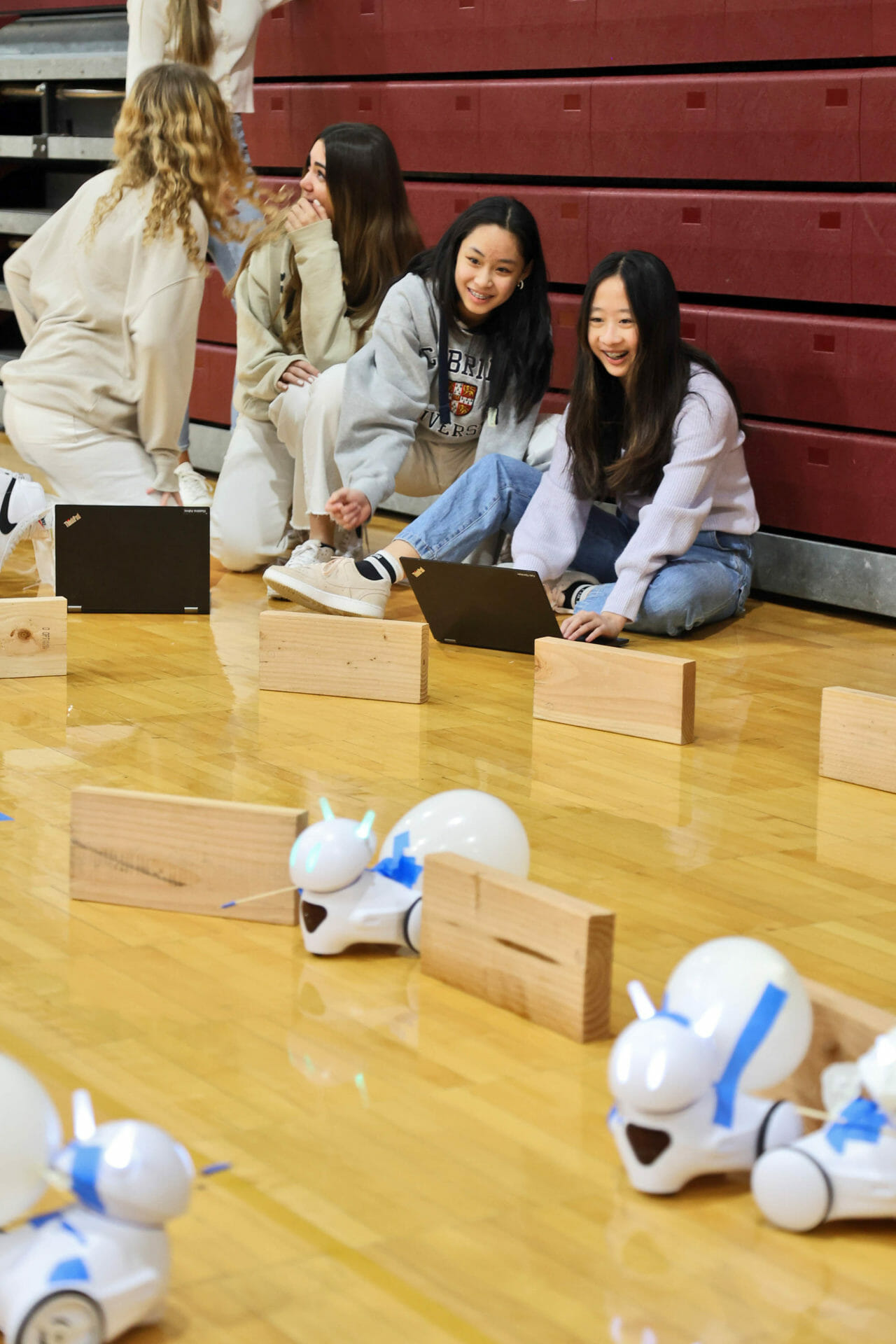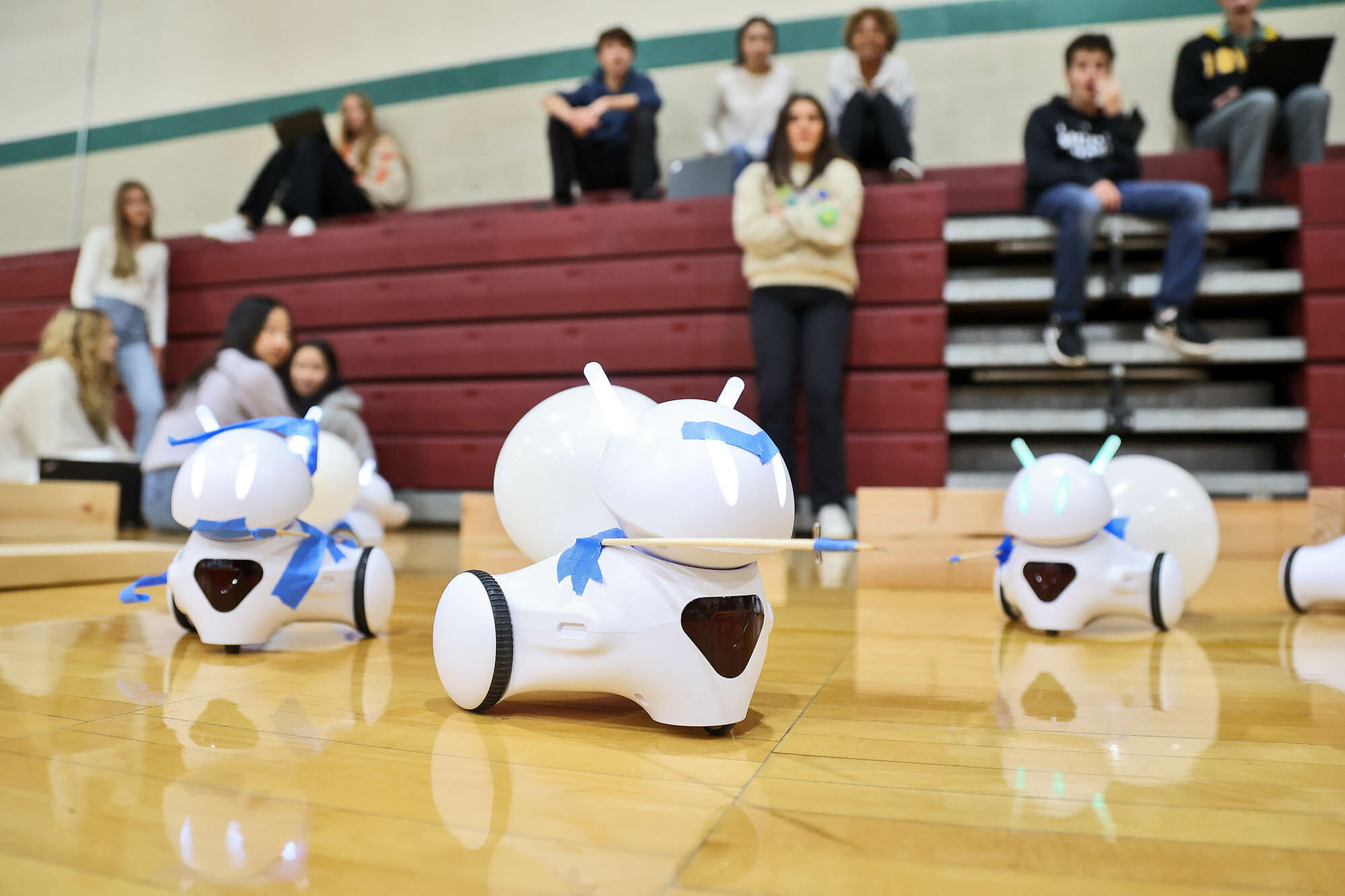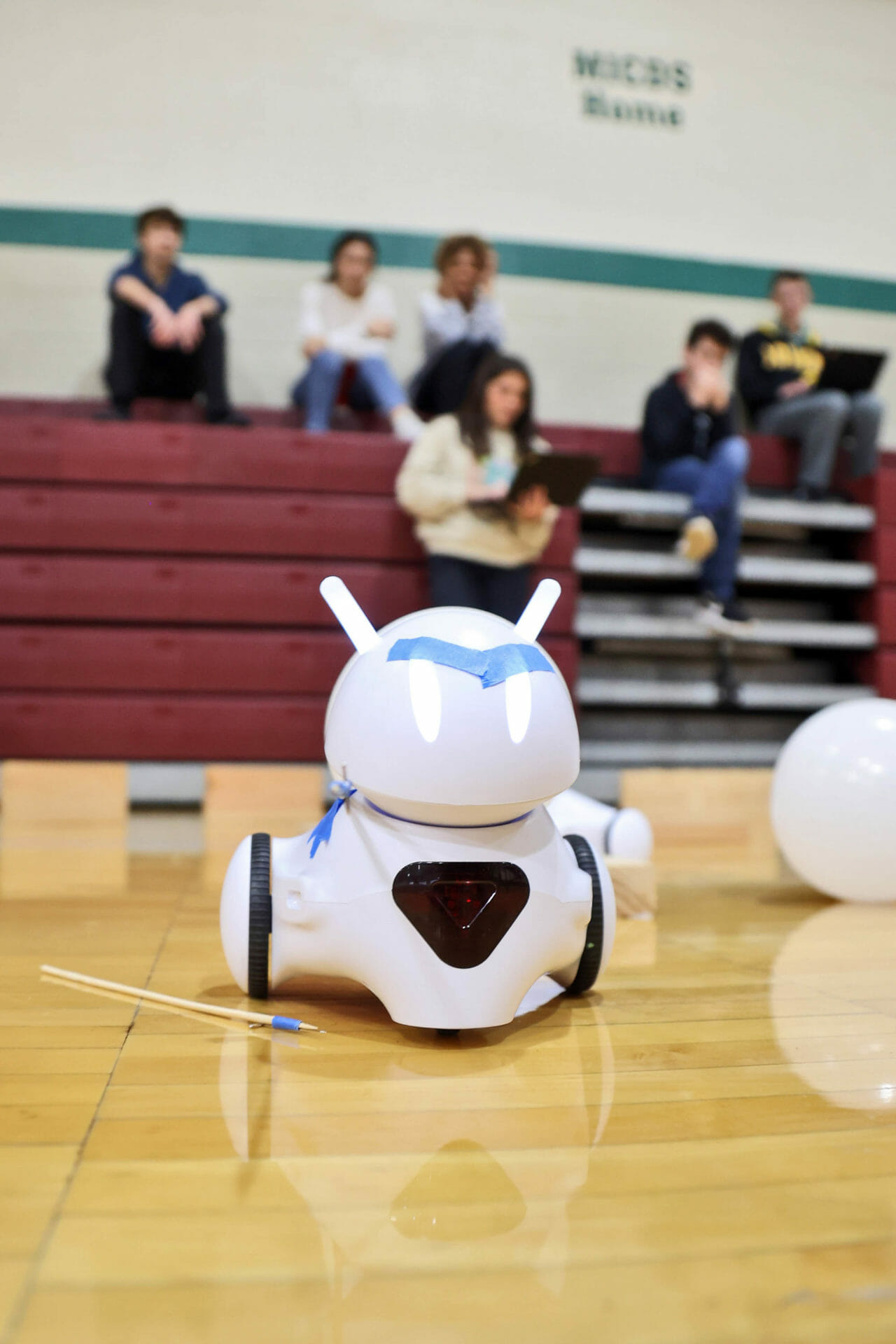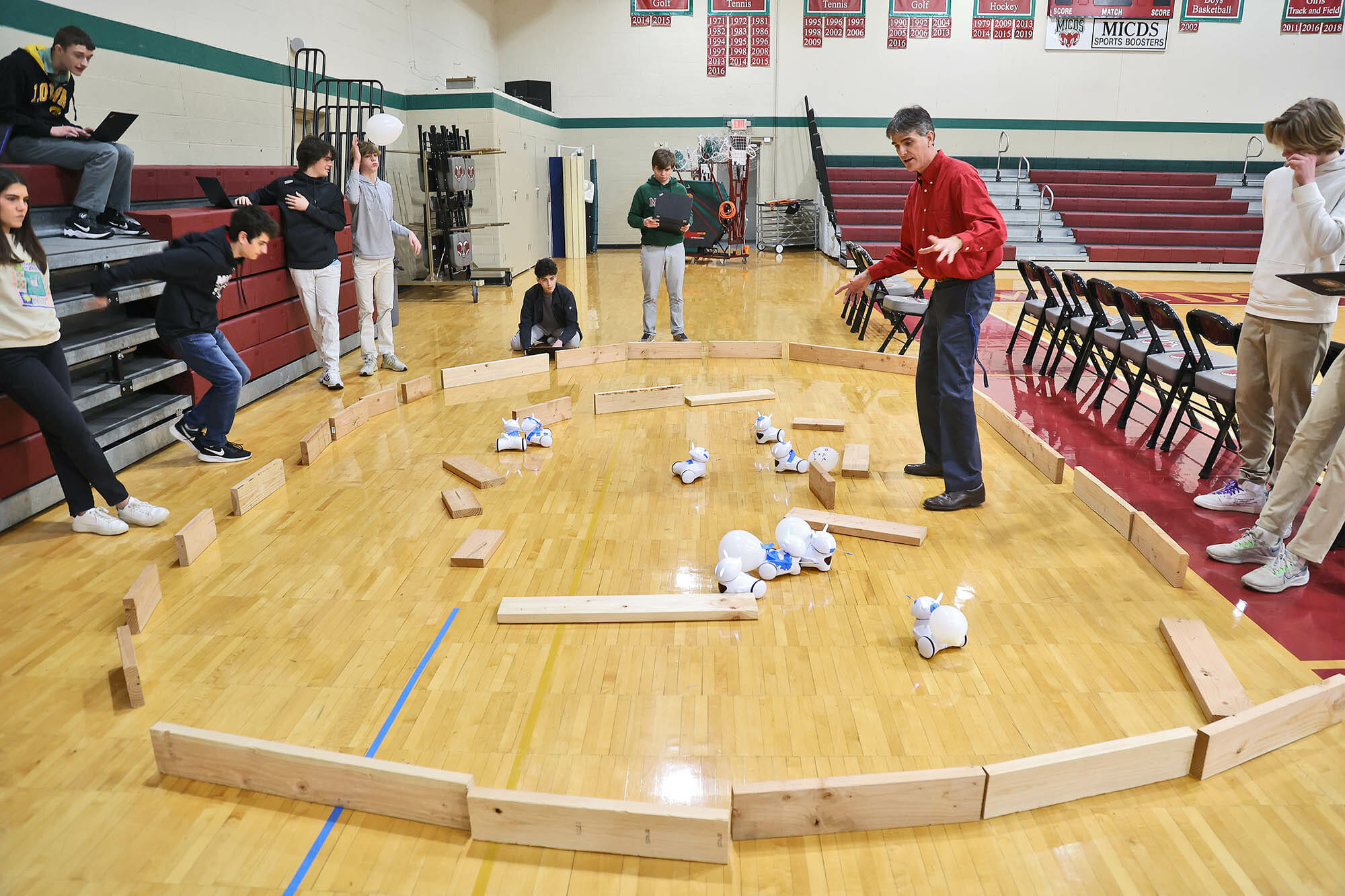Ninth-grade science classes are using a new tool friend to learn how to code this year: Photon Robots. These adorable little tech creatures inspire students to learn through trial and error, which is often the best way to gain knowledge. And they’ve had a blast doing it!
Since mid-January, the classes have been working on learning the basics of coding using the Python language and Jupyter notebooks, an online website that acts as a tutorial in helping students learn to code, and have completed assignments designed to refine their coding skills.
Once coding basics were understood, student groups used their new skills to code the actions of small robots, the Photons. Each Photon robot comes with the ability to move in various directions, make a variety of sounds, and uses sensors to move. Their final challenge was to code their Photon robots to make their way through a maze of wooden blocks.
Andi Galluppi ’10, Ninth Grade Science Teacher, said her students were excited to work with the robots. „They think they’re adorable.“ The coding unit is one of her favorites. „I love the visible pride in the students when they run code that they’ve written, and it does what it’s supposed to do. The process of debugging code is also great for developing resilience and critical thinking, and I’ve noticed a lot of growth from students in those areas in a short amount of time. When they have to comb through their program for errors, it makes it all the sweeter when they accomplish their goal,“ she said.
„While working with them, we figured out how to make the robot make sounds, change colors, and move in various directions,“ said Morgan Macam ’26. „Getting the robot to do what you want is definitely challenging at times, and can take a lot of trial and error, but with the help of peers and Mr. Coco, we were able to complete various tasks. Coding is not an easy task and takes a lot of time, brain power, and patience, and it has raised my respect for computer science.“
„In the past, I’ve had some opportunities to try coding before, but it was never like it is here at MICDS,“ said Dalton Costick ’26. „Here, it was taught really well, and I felt I was able to excel at it. I was able to go really far with my interest in it, even outside of what was regularly taught, with great encouragement from my teachers! All the Science 9 teachers were happy to support me and gave me the opportunity to experiment with things in coding that I didn’t think would be possible to start looking into at the beginning of the unit. It gave me a great opportunity learn and build great coding skills that I plan to continue to expand going into the future!“
Ninth Grade Science Teacher Brian Rueckert enjoyed watching his students having so much fun while learning critical skills. „Computational thinking is not only a crucial skill for modern-day scientists but is really a transferable skill across all disciplines,“ he said. „While we have a lot of fun in our coding unit racing robots through mazes, the thinking and problem solving required to parse out the step-by-step instructions to get a robot from point a to point b help students develop this skill. It’s exciting to see students come up with a wide variety of ways to approach the tasks we challenge them with while at the same time watching them become teachers before our eyes as knowledge mobility occurs and they collaborate to perfect a solution.“
Well done, Science 9 students! And welcome to the Ram Family, Photon robots!
